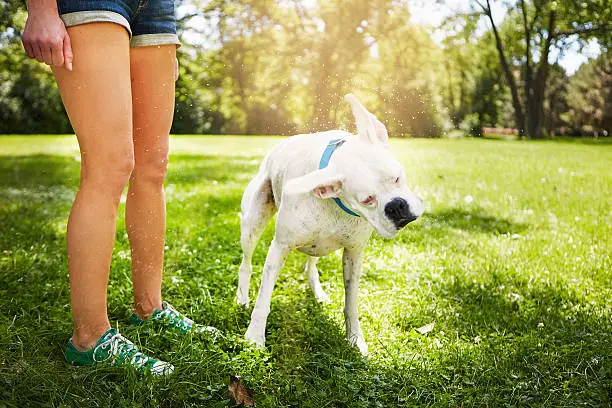Mass Removal Surgery Dog
If your dog has developed a lump or mass, you might be wondering whether mass removal surgery dog procedures are necessary. Understanding the procedure, recovery, risks, and costs involved can help you make the best decision for your furry friend. In this guide, we will cover everything you need to know about mass removal surgery for dogs and what to expect before, during, and after the procedure.

Expert Review by Dr. Emily Carter, DVM
Dr. Emily Carter is a board-certified veterinarian with over 12 years of experience in pet surgery and oncology. She has successfully performed hundreds of mass removal surgeries on dogs and is dedicated to providing accurate pet health information.
What is Mass Removal Surgery for Dogs?
Mass removal surgery for dogs is a veterinary procedure aimed at removing abnormal growths from a dog’s body. These masses can be:
- Benign (non-cancerous): Often harmless but can grow and cause discomfort.
- Malignant (cancerous): Require prompt removal to prevent the spread of cancer.
Veterinarians may recommend this surgery if the mass is growing rapidly, causing pain, affecting mobility, or suspected to be cancerous. A biopsy or cytology test is usually performed after removal to determine the nature of the mass.
When is Mass Removal Surgery Necessary?
Your vet may suggest mass removal surgery dog procedures if:
- The lump is growing rapidly.
- The mass is located in a sensitive area, affecting movement or organ function.
- Your dog is experiencing pain, irritation, or discomfort.
- The lump shows signs of infection, bleeding, or ulceration.
- There is a possibility that the mass is malignant (cancerous).
Early detection and treatment can prevent further health complications.
Preparing Your Dog for Surgery
Proper preparation ensures a smooth surgery and recovery. Here are some essential pre-surgery steps:
- Fasting: Your dog may need to fast for 8-12 hours before surgery to reduce the risk of anesthesia-related complications.
- Blood Tests & Imaging: The vet may conduct X-rays, ultrasounds, or blood work to assess overall health.
- Minimizing Stress: Keeping your dog calm and relaxed before surgery helps reduce anxiety.
- Discuss Medications: Inform your vet about any current medications your dog is taking.
Your vet will provide specific guidelines based on your dog’s condition.
The Surgery Process
On the day of the surgery, your dog will be given anesthesia to ensure a pain-free experience. The procedure typically involves:
- Making an incision around the mass.
- Carefully removing the lump, ensuring minimal impact on surrounding tissue.
- Closing the wound with stitches or surgical glue.
- Monitoring vital signs throughout the surgery.
The duration of surgery depends on the size, location, and complexity of the mass.
Post-Surgery Care and Recovery
After surgery, your dog will be closely monitored until they fully wake up from anesthesia. Recovery typically includes:
1. At-Home Care
- Keep the incision clean and dry.
- Prevent your dog from licking or scratching the wound (use an Elizabethan collar if needed).
- Limit physical activity for a few weeks.
- Follow the vet’s medication and pain management plan.
2. Signs of Complications
Watch for signs that may indicate a problem, such as:
- Swelling or redness at the incision site.
- Excessive bleeding or discharge.
- Loss of appetite or lethargy.
- Difficulty breathing or fever.
If you notice any of these, contact your veterinarian immediately.
Cost of Mass Removal Surgery for Dogs
The cost of mass removal surgery dog procedures varies based on:
- Size & location of the mass.
- Complexity of the surgery.
- Veterinary clinic fees & location.
- Post-surgery medications & tests.
On average, the procedure can range from $300 to $2,500, depending on these factors.
References & Expert Sources
- American Veterinary Medical Association (AVMA)
- PetMD – Dog Tumors & Masses
- American Animal Hospital Association (AAHA)
Final Thoughts
Mass removal surgery dog procedures are common and can significantly improve your pet’s quality of life. If you notice a lump on your dog, consult your veterinarian as soon as possible to determine the best course of action.
Would you like to learn more about mass removal surgery dog procedures or schedule an appointment? Contact your trusted veterinarian today!
Frequently Asked Questions (FAQs)
1. How long does it take for a dog to recover from mass removal surgery?
Most dogs recover within 10-14 days, but full healing may take a few weeks.
2. Is mass removal surgery painful for dogs?
Dogs are given anesthesia during surgery, and vets prescribe pain medications to manage post-surgery discomfort.
3. Can a benign tumor be tolerated by a dog?
Yes, but if the tumor grows, causes discomfort, or affects organ function, removal is recommended.
4. What can I do to stop my dog from getting lumps?
Regular veterinary check-ups, a healthy diet, and exercise can help maintain overall health.



